03:00
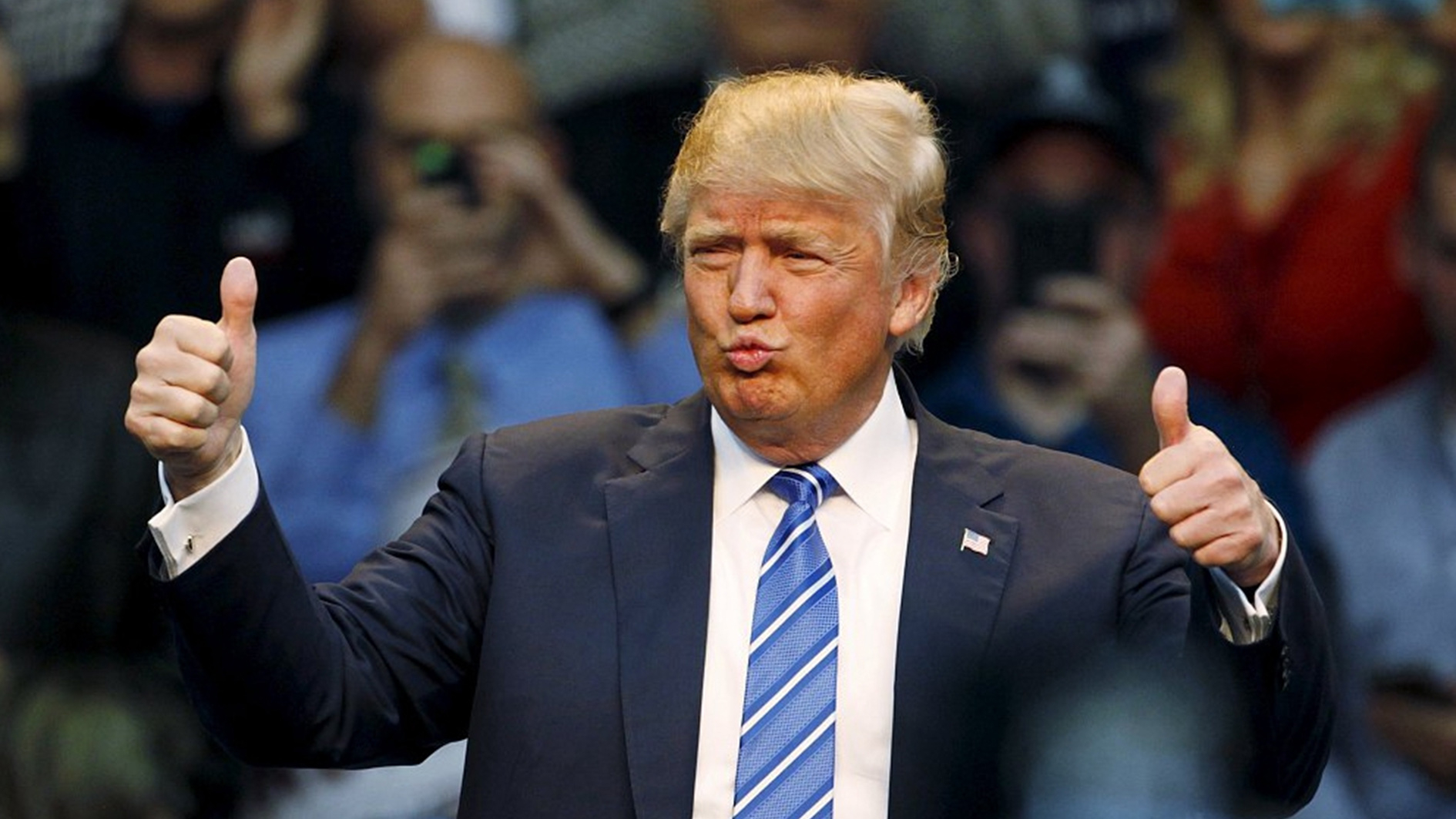
U.S. President Donald Trump claimed Saturday the "liberation" of all territory controlled by ISIL in Syria and Iraq, while vowing to remain vigilant until "it is finally defeated."
Trump said in a statement that the United States, together with its partners in the Global Coalition to Defeat ISIS (ISIL), has liberated "100 percent of the caliphate."
"We will remain vigilant against ISIS (ISIL) by aligning global counterterrorism efforts to fight ISIS until it is finally defeated wherever it operates," he added.
The U.S.-backed Syrian Democratic Forces (SDF) also announced earlier on the same day the end of its self-declared "caliphate" that once spanned a third of Iraq and Syria.

Mazloum Kobani, SDF's commander-in-chief (C) speaks during a victory ceremony, Baghouz, March 23, 2019. / VCG Photo
Mazloum Kobani, SDF's commander-in-chief (C) speaks during a victory ceremony, Baghouz, March 23, 2019. / VCG Photo
The SDF declared the "total elimination of (the) so-called caliphate," Mustafa Bali, head of the SDF media office, wrote on Twitter.
Read more:
"Baghouz has been liberated. The military victory against Daesh has been accomplished," he wrote.
The SDF has been battling to capture Baghouz at the Iraqi border for weeks.
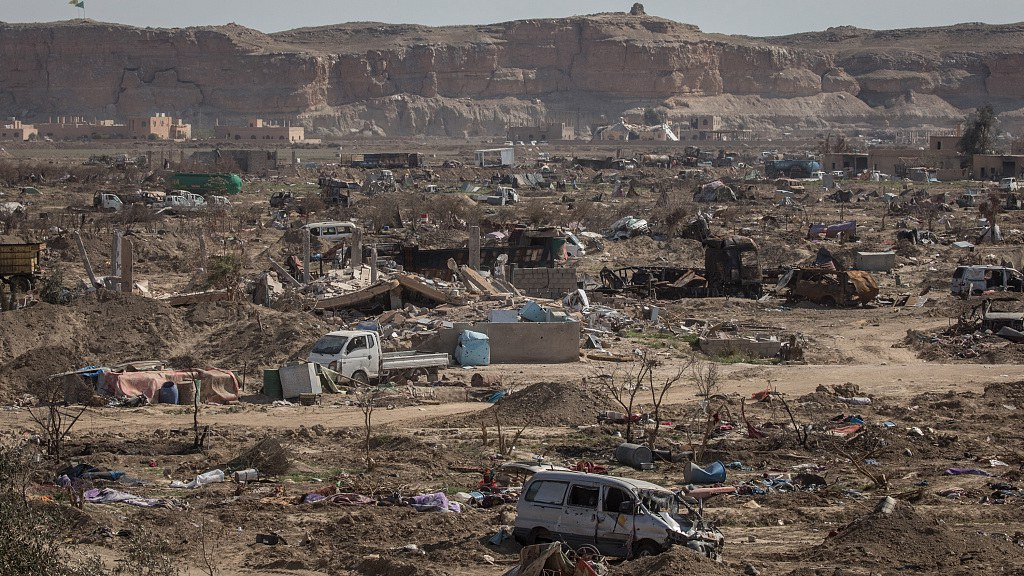
The destroyed ISIL encampment in Baghouz, Syria, March 23, 2019. /VCG Photo
The destroyed ISIL encampment in Baghouz, Syria, March 23, 2019. /VCG Photo
Daesh is an Arabic acronym for ISIL. "We renew our pledge to continue the war and to pursue their remnants until their complete elimination," he wrote.
Though the defeat of ISIL at Baghouz ends the group's grip over the jihadist quasi-state straddling Syria and Iraq that it declared in 2014, it remains a threat.
Some of its fighters still hold out in Syria's remote central desert and in Iraqi cities they have slipped into the shadows, staging sudden shootings or kidnappings and awaiting a chance to rise again.
The U.S. believes the group's leader, Abu Bakr al-Baghdadi, is in Iraq. He stood at the pulpit of the great medieval mosque in Mosul in 2014 to declare himself caliph, sovereign over all Muslims.
SDF: Fighting against ISIL enters 'new phrase'
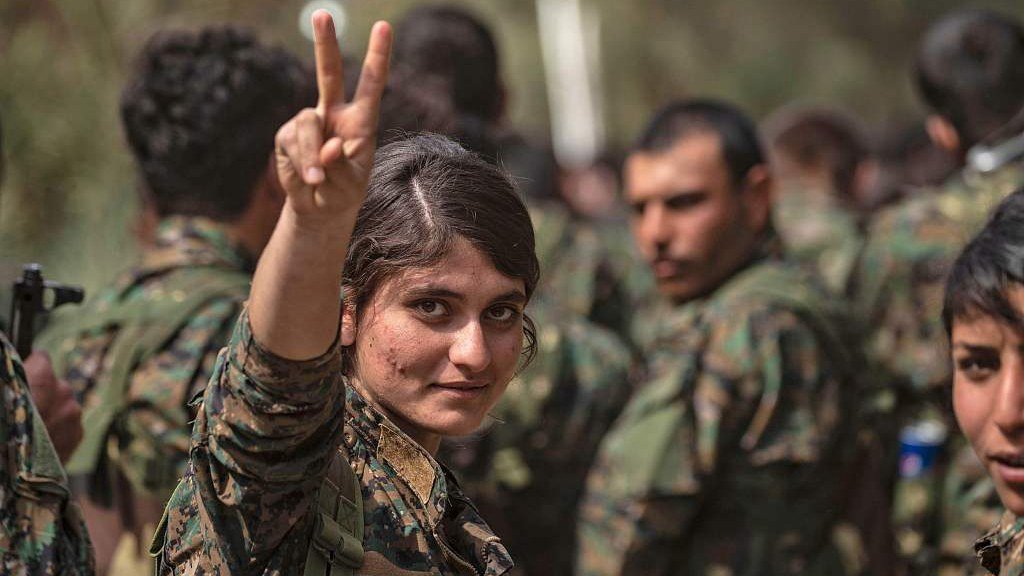
A female fighter of the U.S.-backed Syrian Democratic Forces (SDF) flashes the victory gesture while celebrating near the Omar oil field in the eastern Syrian Deir Ezzor province, March 23, 2019. /VCG Photo
A female fighter of the U.S.-backed Syrian Democratic Forces (SDF) flashes the victory gesture while celebrating near the Omar oil field in the eastern Syrian Deir Ezzor province, March 23, 2019. /VCG Photo
The defeat of the ISIL's territorial "caliphate" begins a new phase in operations against the jihadists which will target sleeper cells, the top Syrian Kurdish commander said Saturday.
"We announce to the world public opinion the beginning of a new phase in the fight against terrorists," said Mazloum Kobane, the overall commander of the U.S.-backed SDF.
Speaking at a ceremony in eastern Syria following the announcement that the last ISIL bastion had fallen to his forces, he called for continued assistance from a U.S.-led coalition.
Mazloum said that the focus of upcoming military operations in the jihadists' former heartland would be the elimination of sleeper cells "which are a great threat to our region and the whole world."
The rise and fall of ISIL bastion
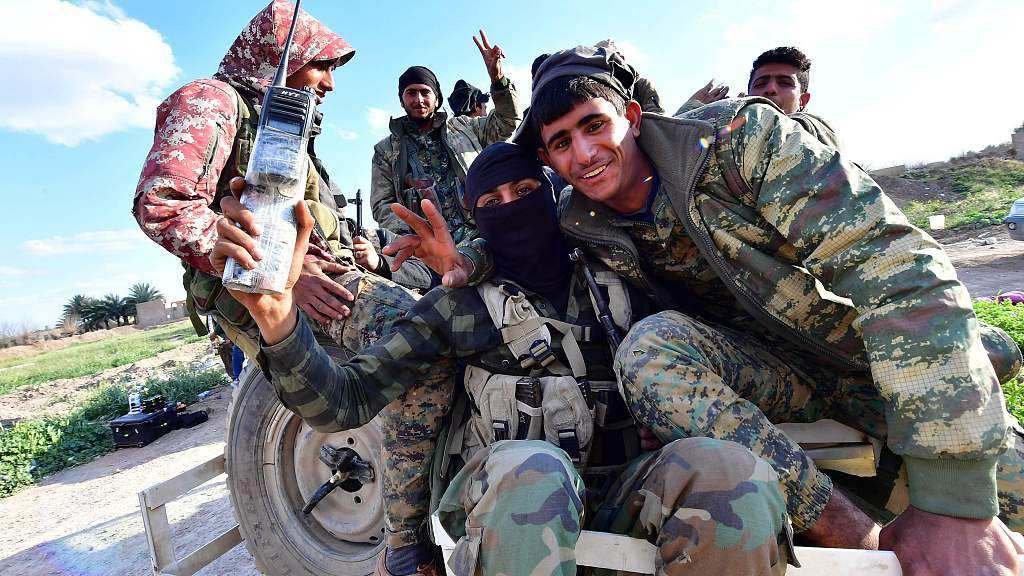
Fighters of the Syrian Democratic Forces (SDF) return from the frontline Baghouz, March 19, 2019. /VCG Photo
Fighters of the Syrian Democratic Forces (SDF) return from the frontline Baghouz, March 19, 2019. /VCG Photo
Out of the ashes of Al Qaeda in Iraq, the Islamic State of Iraq rose in 2006.
In 2013, the ISI announced the incorporation of a Syrian radical Islamist militant group and changed its name to the Islamic State in Iraq and the Levant, ISIL, which later became a deadly force behind the carnage of Syria's civil war, fighting alongside rebels against the government of President Bashar Al Assad.
In 2014, ISIL conquered Falluja, Tikrit and Mosul, Iraq's second largest city in succession and the world was stunned by ISIL's lightning attacks. In June, ISIL announced the creation of a caliphate.
In May 2015, ISIL seized power in Ramadi, in western Iraq. Later, Palmyra is taken in Syria. ISIL's lands at the time equal the size of the UK.
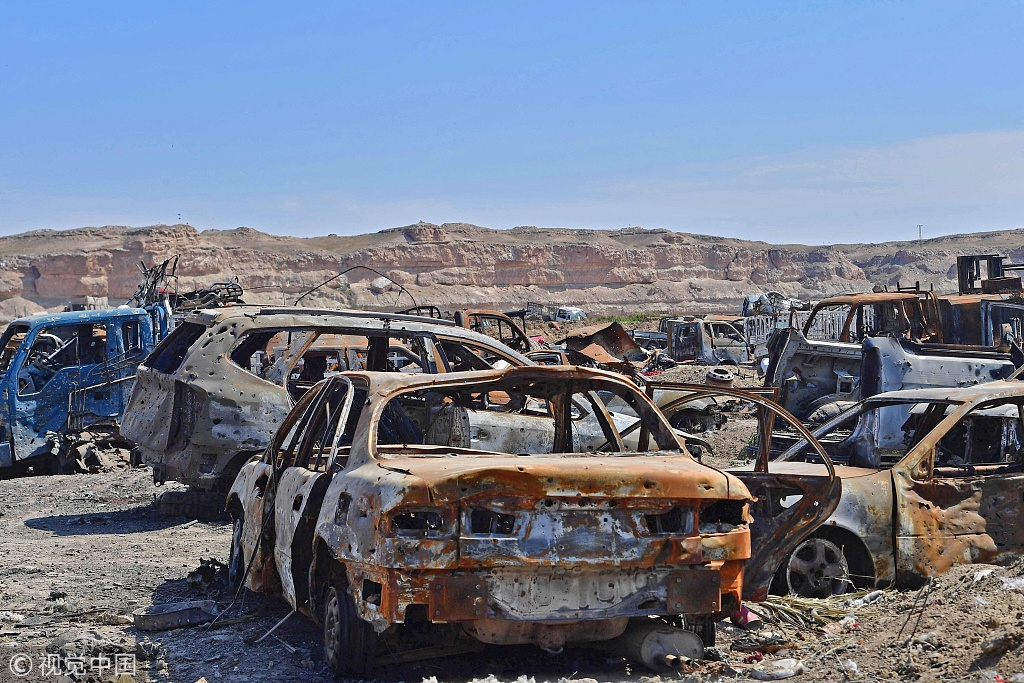
Vehicle wrecks in the fallen Islamic State's last bastion, Baghuz, March 23, 2019. / VCG Photo
Vehicle wrecks in the fallen Islamic State's last bastion, Baghuz, March 23, 2019. / VCG Photo
However, the tide shifted in 2016. In June, Iraqi forces took back Falluja.
In July 2017, Mosul was freed from ISIL at a horrendous cost, thousands dead and much of the city destroyed.
Shortly afterward, the group lost its self-declared capital, Raqqa in Syria, the first town it ever really controlled.
In December 2017, Iraq said it had taken all territory back from ISIL.
Throughout 2018, ISIL lost territory in Syria, under pressure from Syrian and Kurdish fighters.
Finally, ISIL made its final stand in Baghouz, eastern Syria. The group was defeated and lost all its ground by now.
The U.S. has been crucial in the fight against ISIL, its airstrikes backing up troops on the ground. Exactly how long the US will remain in Syria is an open question, as President Donald Trump has given conflicting statements on the number of U.S. troops who will stay there.
(CGTN reporter Shang Jiang also contributed to the story.)
Source(s): Reuters
,Xinhua News Agency







